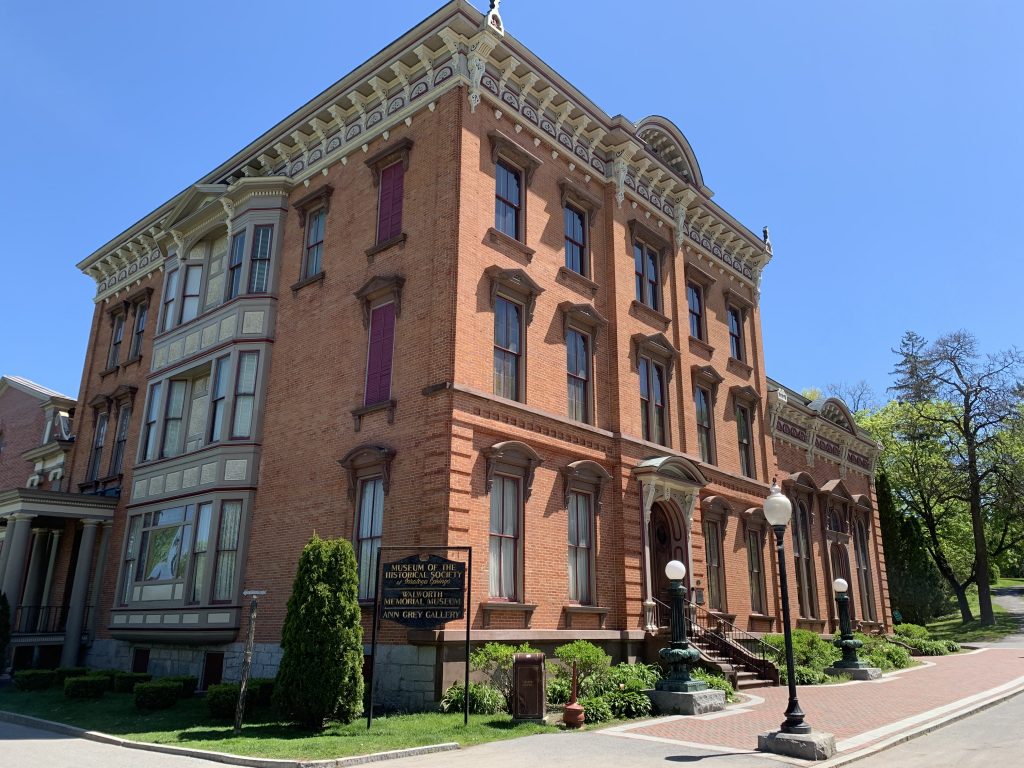 During this time when many of us have found comfort in our homes, summer weather is encouraging us to venture outside and explore areas around us. I am thrilled to announce that the Saratoga Springs Preservation Foundation is able to once again offer our Summer Sunday Strolls. The tours provide an opportunity to learn more about the architecture and history of different areas throughout Saratoga Springs while remaining safe and socially distant. Today at 10:30 a.m., I kick-off the series of tours with a stroll of North Broadway. I will share about the grand residences and those who lived there. If you are reading this after my tour started, don’t worry there are tours each week of different areas of the city through Labor Day!
During this time when many of us have found comfort in our homes, summer weather is encouraging us to venture outside and explore areas around us. I am thrilled to announce that the Saratoga Springs Preservation Foundation is able to once again offer our Summer Sunday Strolls. The tours provide an opportunity to learn more about the architecture and history of different areas throughout Saratoga Springs while remaining safe and socially distant. Today at 10:30 a.m., I kick-off the series of tours with a stroll of North Broadway. I will share about the grand residences and those who lived there. If you are reading this after my tour started, don’t worry there are tours each week of different areas of the city through Labor Day!
Next Sunday, June 28, Charlie Kuenzel will lead a tour of Congress Park, a National Historic Landmark. Charlie, a former teacher, local tour guide, and current president of Saratoga Springs History Museum, will share a wealth of information on the tour. However, this year the tour will have greater focus on the Canfield Casino as it celebrates its 150th anniversary. When asked about the significance of the casino, Charlie responded, “It is one of the last structures in the city that helps to tell the story of our city’s greatness in the 1800’s when we were the number one tourist destination in America.”
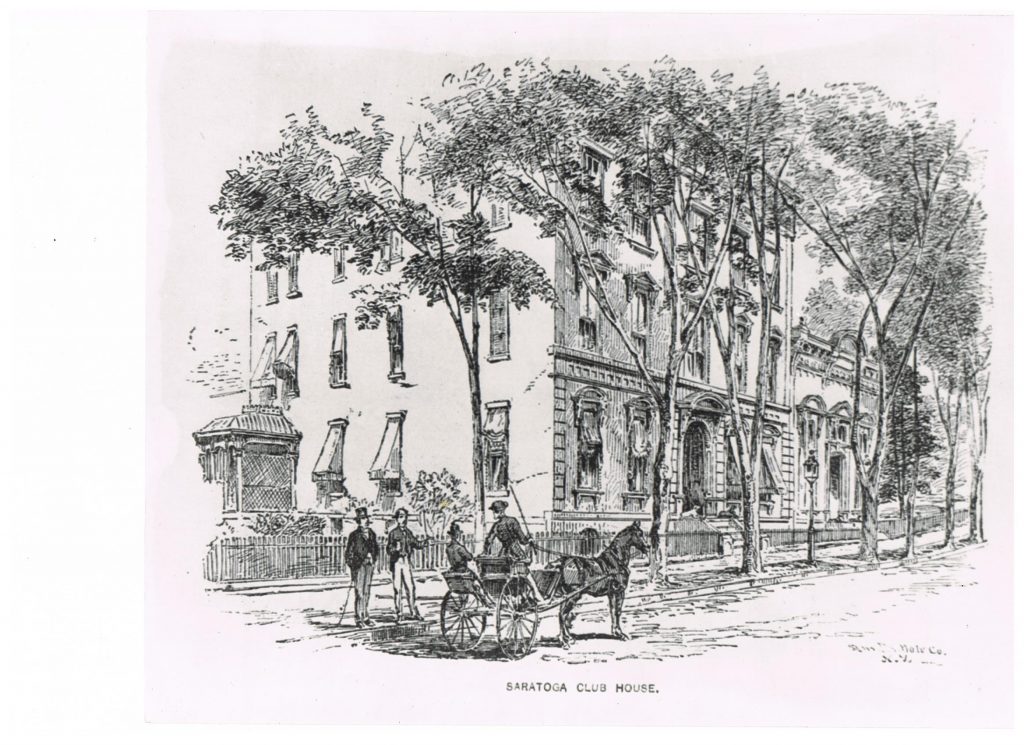 John Morrissey, a former heavyweight-boxing champion and New York State senator, built the beautiful Italianate style casino in 1870 and operated it until his untimely death on May 1, 1878. Morrissey came to Saratoga Springs in 1861 and opened a gambling house on Matilda Street, today Woodlawn Avenue. By 1863, Morrissey realized that well run games of chance in the proper environment would attract the rich and famous, so he along with partners Leonard Jerome, William Travers, and John Hunter founded the Saratoga Race Course. Seeing immediate success with thoroughbred horse racing, he made plans to build a palatial gaming location. By 1869, he purchased land in what is known today as Congress Park and in the summer of 1870, the “Club House” opened.
John Morrissey, a former heavyweight-boxing champion and New York State senator, built the beautiful Italianate style casino in 1870 and operated it until his untimely death on May 1, 1878. Morrissey came to Saratoga Springs in 1861 and opened a gambling house on Matilda Street, today Woodlawn Avenue. By 1863, Morrissey realized that well run games of chance in the proper environment would attract the rich and famous, so he along with partners Leonard Jerome, William Travers, and John Hunter founded the Saratoga Race Course. Seeing immediate success with thoroughbred horse racing, he made plans to build a palatial gaming location. By 1869, he purchased land in what is known today as Congress Park and in the summer of 1870, the “Club House” opened.
“Morrissey spared no expense, the premier furniture design company, Herter Brothers of New York City, was hired to design the furnishings,” shared Charlie. The company was known for designing furniture for prominent business leaders in New York City. “The same year they worked on the Canfield Casino, they also did The White House. Today, the Canfield Casino is only one of three public spaces designed by the Herter Company to still be in existence,” noted Charlie.
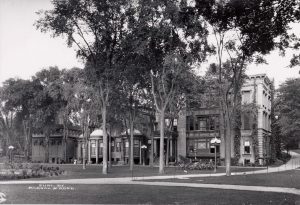 Morrissey offered wealthy men membership to this elite club for $250 a season. During the first summer 200 men took advantage of this offer. The clever use of the name “Club House” helped to disguise the gambling that took place and kept the illegal operation open for business for that entire first season. “Morrissey never allowed local men to be members since he never wanted anyone from the village to be upset with money lost at his tables. Morrissey barred women, but received little pushback – including from women, because gambling was not socially acceptable,” said Charlie. “The Club House was not open on Sundays as he wanted to stay on the good side of the local churches. In a genius move, he further cemented his good standing in the community by taking a portion of each season’s profits to make donations to every church and non-profit organization in the village,” he continued. These strategies allowed Morrissey to be a very “popular” person in town and assured his operation would have little interference in the future.
Morrissey offered wealthy men membership to this elite club for $250 a season. During the first summer 200 men took advantage of this offer. The clever use of the name “Club House” helped to disguise the gambling that took place and kept the illegal operation open for business for that entire first season. “Morrissey never allowed local men to be members since he never wanted anyone from the village to be upset with money lost at his tables. Morrissey barred women, but received little pushback – including from women, because gambling was not socially acceptable,” said Charlie. “The Club House was not open on Sundays as he wanted to stay on the good side of the local churches. In a genius move, he further cemented his good standing in the community by taking a portion of each season’s profits to make donations to every church and non-profit organization in the village,” he continued. These strategies allowed Morrissey to be a very “popular” person in town and assured his operation would have little interference in the future.
Upon the passing of Morrissey, two lesser partners Albert Spencer and Charles Reed operated the gambling house at a less than stellar level of performance. In 1893, they added a new partner, Richard Canfield.
Canfield had just returned from a trip to England and became interested in the Club House when he visited Saratoga Springs that summer. The following year, Canfield bought out Spencer and Reed for the handsome sum of $250,000, approximately $7 million today. He immediately began to make changes to the operation and renamed it the Casino. He required men to dress in formal attire to enter the building and payed all money won by patrons immediately from a safe located in his office that daily held one million dollars. “Canfield ran honest games and was happy to take the percentage of profit from the natural risk of each game. He gave those that lost a split of champagne and consoled them with a gentle hand on their back,” Charlie shared. His honest and open business approach resulted in huge success.
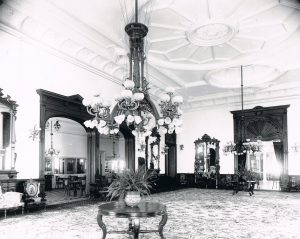 In 1903, Canfield constructed a dining room at the rear of the building, which became one of the finest restaurants in the country. As a way to attract a gentler crowd to the Casino, he added the Italian Gardens with the Spit and Spat fountain as a focal point. However, by 1907 an anti-gambling reform movement began to develop locally. The casino did not open for another season and in 1911, Canfield sold the building and a large portion of land to the City of Saratoga Springs.
In 1903, Canfield constructed a dining room at the rear of the building, which became one of the finest restaurants in the country. As a way to attract a gentler crowd to the Casino, he added the Italian Gardens with the Spit and Spat fountain as a focal point. However, by 1907 an anti-gambling reform movement began to develop locally. The casino did not open for another season and in 1911, Canfield sold the building and a large portion of land to the City of Saratoga Springs.
“We are very fortunate that the City of Saratoga Springs is a good steward of the building that tells such an important part of our community’s history. Commissioner of Public Works, Skip Scirocco, and his staff have done a tremendous job of maintaining and preserving the building,” recognized Charlie. The restoration of the stained glass windows, skylights, and the wood floors of the ballroom were most recently completed. Currently, the copper cupolas above the parlor are being restored.
As president of the Saratoga Springs History Museum, Charlie encourages everyone to visit the museum to celebrate the 150th anniversary of the Canfield Casino and see the interior. The Museum will be allowed to open in Phase 4 of the state’s reopening plan, which is expected to be in July. “When we re-open, we will be highlighting a fantastic new exhibit on the grand historic hotels of Saratoga Springs that will reveal the day-to-day life of visitors, traditions, social practices, and accommodations provided during the summer season – it is an exhibit not to be missed! The staff and volunteers are eager to get back to what they do best, telling the story of Saratoga Springs,” enthusiastically stated Charlie. To learn more about the Museum, its collections, hours of operation, and admission, please visit www.saratogahistory.org.
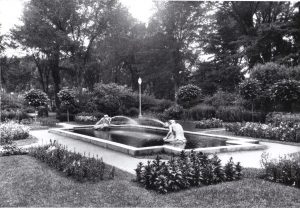 I hope you will join us for our Summer Sunday Strolls to learn more about the unique architecture and rich heritage of Saratoga Springs. All strolls last approximately 90 minutes and require walking and standing on varied terrain. Due to current restrictions in New York State, Summer Strolls will be limited to 20 guests, which is less than the maximum of 25 that is currently allowed. Everyone will be required to wear a mask and social distancing will be encouraged when possible. Tickets are $15 for SSPF members and $20 for non-members. For more information, to view the entire Summer Sunday Stroll calendar, and to review the Summer Stroll Safety Plan please visit our website www.saratogapreservation.org.
I hope you will join us for our Summer Sunday Strolls to learn more about the unique architecture and rich heritage of Saratoga Springs. All strolls last approximately 90 minutes and require walking and standing on varied terrain. Due to current restrictions in New York State, Summer Strolls will be limited to 20 guests, which is less than the maximum of 25 that is currently allowed. Everyone will be required to wear a mask and social distancing will be encouraged when possible. Tickets are $15 for SSPF members and $20 for non-members. For more information, to view the entire Summer Sunday Stroll calendar, and to review the Summer Stroll Safety Plan please visit our website www.saratogapreservation.org.
Founded in 1977, the Saratoga Springs Preservation Foundation is a private, not-for-profit organization that promotes the preservation and enhancement of the architectural, cultural and landscaped heritage of Saratoga Springs. To learn more or to join, please visit www.saratogapreservation.org.
